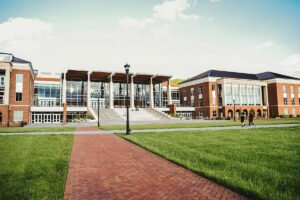
November 17, 2020; Inside Higher Ed
“In response to skyrocketing cases this week and last, higher ed institutions have been transitioning to online learning in great numbers,” reports Lilah Burke in Inside Higher Ed. In the past week alone, Burke reports, “at least 20 institutions announced they will be switching to online learning for the remainder of their semesters.”
As of September, as a Washington Post article reported last week, “about 37 percent of four-year colleges were running fully or primarily online, according to data from a crisis-monitoring initiative at Davidson College in North Carolina. About 34 percent were teaching primarily or fully in person. Most of the rest had a mixed approach, known as hybrid learning.”
Now many of those schools that had employed in-person learning are scaling that back. Among schools calling an earlier end to in-person fall classes are Seton Hall University, Cleary University, Vincennes University, King’s College, Drake University, University of Maryland at College Park, the University of Missouri at Columbia, Villa Maria College and the Universities of Wisconsin at Eau Claire, River Falls, and Stout.
“It’s not a small number of institutions. It is a large number of institutions,” says Chris Marsicano, director of the College Crisis Initiative at Davidson College. “It is certainly becoming a trend.”
Some of those institutions—Seton Hall, Cleary, Vincennes, King’s College, and Drake—had already planned since the school term started to shift to remote learning before Thanksgiving break for the rest of the fall semester. Others had been planning to continue with in-person classes until the end of the semester.
Of course, one impact of the shutdowns ironically could be to accelerate the diffusion of the novel coronavirus. “Because campuses are congregate settings that can encourage spread, public health and medical experts are voicing concerns about students leaving college and potentially infecting their families and home communities,” Burke writes.
Sign up for our free newsletters
Subscribe to NPQ's newsletters to have our top stories delivered directly to your inbox.
By signing up, you agree to our privacy policy and terms of use, and to receive messages from NPQ and our partners.
According to Marsicano, a number of institutions have failed to announce plans to test students for COVID-19 before they leave campus, a fact he finds “worrisome”:
We understand from our research that if you can control mobility of students and specifically the mobility of COVID-positive students, you can keep everybody safe and healthy. What you don’t want to do, which is what some institutions are doing, is letting students out into the wind without testing them first.
Burke adds that there is also variability among universities as to how closed is “closed.” Some colleges, such as Westfield State University and Saint Joseph’s College of Maine, are closing residence halls and mandating that students move. Others, such as Northern Michigan University, are allowing students to stay on campus if they wish.
In some cases, the campus shutdowns can be stunningly quick. At Westfield State, which announced its shift Monday, staggered moveout began the following day.
“At Saint Joseph’s,” Burke writes, “the administration announced Sunday that the exit plan would begin the following day. Students are required to get tested in shifts and—following a projected 24-hour turnaround time for results—leave immediately after getting a negative result.”
Last spring, when campuses were shut down, some students who lost their on-campus housing were left scrambling to find other housing. The shutdown this time is less of a shock, but it still is not easy for many students. Marsicano tells Burke that universities could have and should have been bettered prepared for this always conceivable outcome. “It did not have to be this way. It did not have to be a situation where institutions are responding rather than being proactive.”—Steve Dubb











